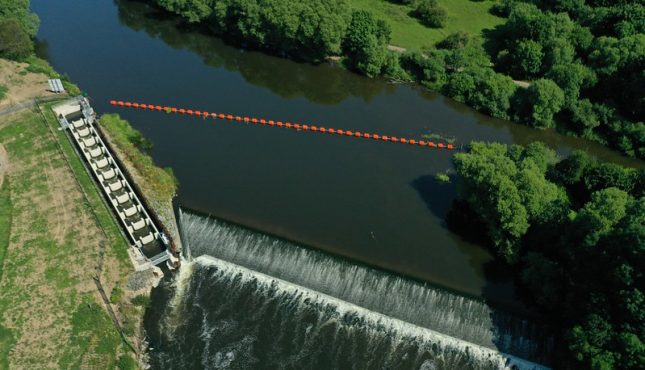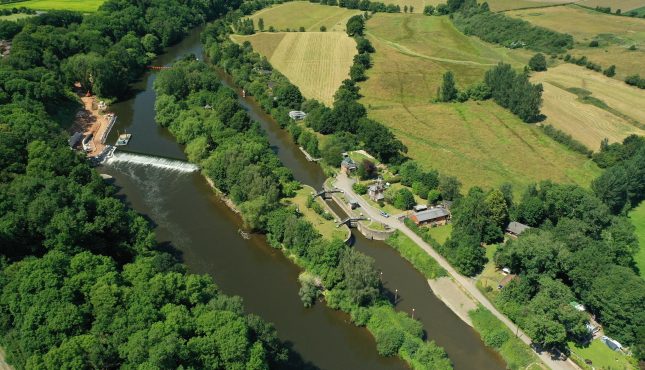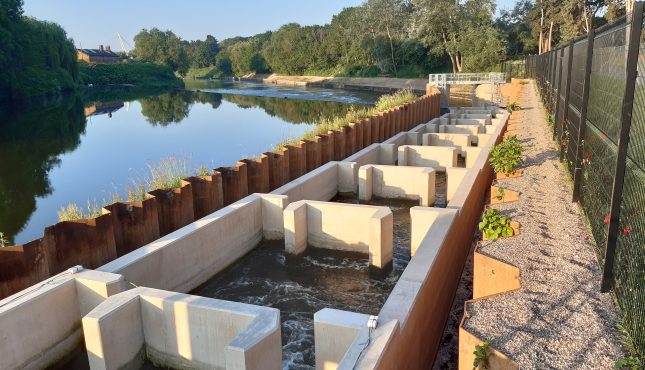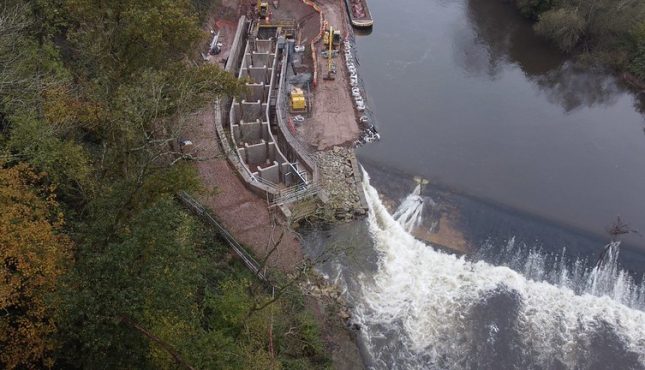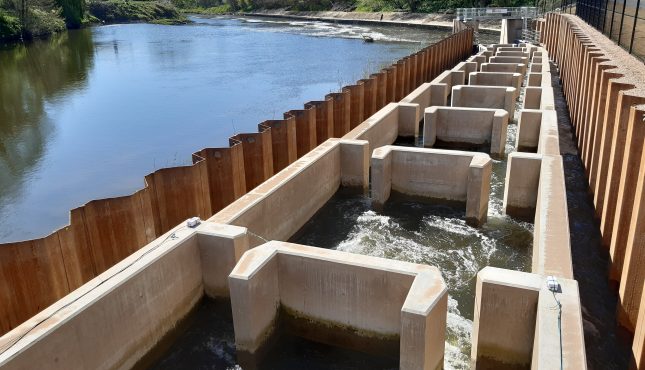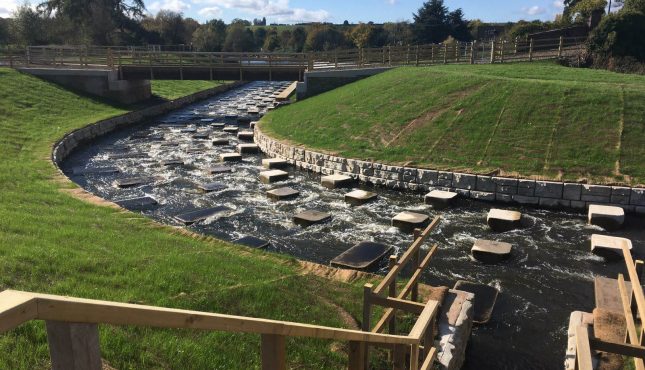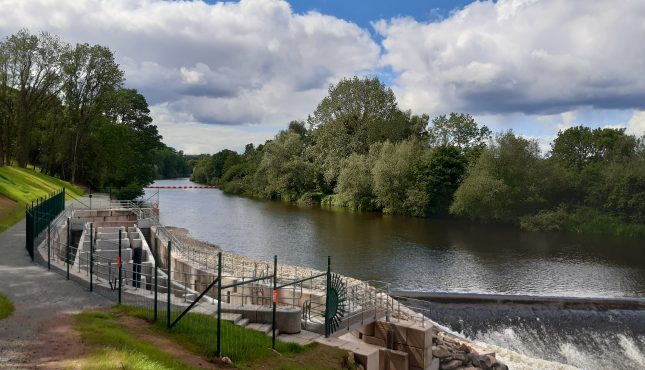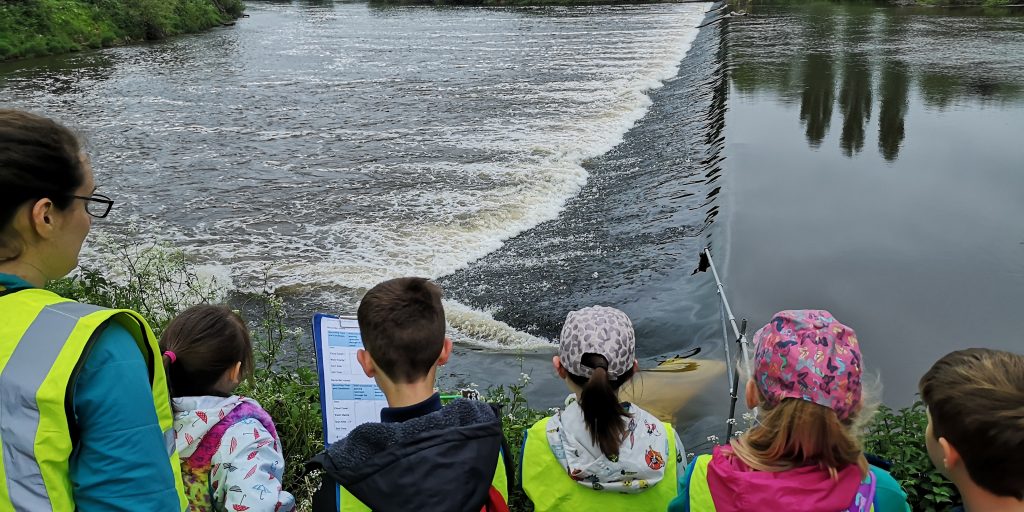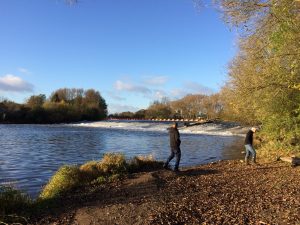The weir at Diglis was the first insurmountable barrier that shad encountered on their migration route. Here we have built our largest deep-vertical-slot fish pass. It’s 100 metres long, 8 metres wide and 5 metres deep.
At the time of construction, it was the largest fish pass of it’s kind in England and Wales. Uniquely, it contains a underwater viewing window that allows us to film migrating fish using the pass and also give visitors their own chance to glimpse wild fish swimming by.
Find out more about how we built this massive structure on our dedicated Diglis Fish Pass page!


